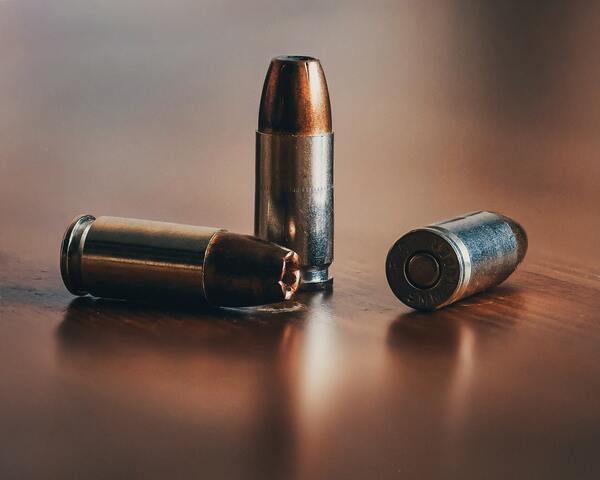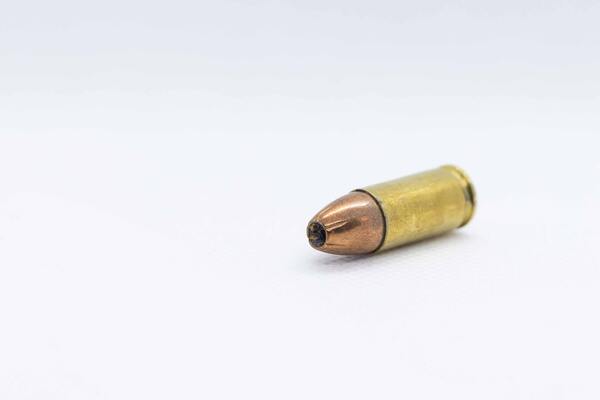The average American gun owner does not understand how important it is to make grain one of their criteria when purchasing rounds, whereas hunters and marksmen are more familiar with how grain affects shooting performance. Here is everything you need to know about grain in ammo, whether you’re trying to choose the best ammunition for a pending hunt or you just want to know what you’re looking at while visiting the gun store.
What Is Bullet Grain
Ammunition grain is frequently misinterpreted. Many people believe that the “grain” on an ammunition box refers to gunpowder. This makes sense given that gunpowder is composed of granules and is also measured in grains (we know, it’s confusing).
However, bullet grain is simply the grain of a cartridge’s projectile – the actual metal piece that is fired from the gun excluding the casing and the gunpowder load. The grain of a bullet does not indicate that it has a higher energy charge; rather, it simply provides information on the projectile’s grain so that you can use that information to make an informed choice depending on the application. The range of bullet grains is 17 to 700 grains.
The term “grain” (abbreviated as “gr.”) is the smallest unit of grain in the There are 7,000 gr. in a pound and 437.5 gr. in an ounce.
What does this mean for bullets, then? Basically, the grain of your projectile will impact the speed, distance, and accuracy of its trajectory. You should consider your ammo’s grain depending on what you’re doing in order to select the best option for the job at hand. For example, you’ll want to use a different grain for your EDC weapon than you would for long-range target practice with your rifle.
Why Does Bullet Grain Matter
You already know how important precision is when shooting—it matters a lot. Therefore, it should come as no surprise that a bullet’s grain has a big effect on how well ammunition works. The accuracy of your shot as a whole as well as the kick you experience when pulling the trigger can both be impacted by grain.
You must have at least a fundamental understanding of ballistics before we can discuss the specifics of how grain affects the various aspects of shooting.
The study of ballistics teaches us how bullets function. It entails the examination of the firing and operational characteristics of projectiles. Ballistics can be divided into three different categories: internal ballistics, external ballistics, and terminal ballistics.
Internal ballistics examines what takes place inside the gun from the moment you pull the trigger until the round leaves the barrel. Recoil and acceleration are examples of this.
A bullet’s trajectory—or the period of time between when it leaves your gun and strikes the target—is the subject of the study of external ballistics. This includes things like bullet drop, or how straight the projectile shoots, drag, and outside factors like wind, all of which have an effect on your accuracy.
Ballistics at the bullet’s terminal point refers to what transpires when it strikes the target. This clarifies the extent to which a bullet will pierce and the manner in which it will expand after impact.
How Does Bullet Grain Affect Shooting
So now we know that there are different grains for bullets and that this is measured in grains, but what does it mean for the shooter? The performance of the bullet after being fired is impacted by its grain, including effects on recoil and accuracy.
Recoil– Whether bullet grain affects recoil is a hot topic of discussion. We are unable to determine whether the bullet grain alone affects recoil because there are numerous other factors that also play a role. Instead, we must comprehend the connection between bullet grain and recoil.
Power factor, a measurement of the bullet’s momentum, is primarily employed in competitive settings to ascertain perceived recoil. It is calculated by dividing by 1,000 after multiplying the bullet grain by the velocity. Two different rounds could have different bullet grains and velocities while still having the same power factor.
Although this isn’t always the case and we need to consider the other factors, theoretically, cartridges with the same power factor should have the same recoil.
Gunpowder is needed in greater quantities because lighter bullets must move more quickly than heavier ones to achieve the same power factor. Accordingly, the heavier, slower-moving bullet will stay in the barrel longer than the lighter, faster-moving bullet, resulting in a difference in the amount of recoil that is actually felt.

Many shooters claim that the recoil of the light, fast bullet feels “snappier” than the recoil of the heavy bullet, which is more of a flat push. The barrel length, grain, and design of the gun, as well as the shooter’s grip and stance, are additional variables that can affect how recoil is perceived. With so many factors at play, it is difficult to say with certainty which bullet grain has the greatest impact on recoil.
Accuracy- In general, you may find that your gun performs with better accuracy with a certain bullet grain. The best way to determine what works for you is to experiment with different rounds as this can vary from gun to gun.
A heavy bullet may be less likely to be affected by external conditions such as wind, but it also may be harder to stabilize resulting in keyholing, or the bullet entering the target sideways.
When To Concern About Bullet Grain
What cartridge is best for you will depend on your intended use, which is crucial. Here’s a quick look at some typical uses and some things to keep in mind for each.
Range Training- The grain of the bullet is something that many shooters have never considered. Usually, they don’t have any issues shooting whatever is most affordable and readily available. The majority of the time, shooters who only want to plink at the range can find an affordable round that reliably makes their gun and wallet happy.
Self Defense- Bullet grain shouldn’t be the main factor in your decision when selecting a self-defense round. When choosing a round to be used on targets other than paper and steel, bullet penetration and expansion are far more crucial than grain. Since stopping a threat is the goal, you want ammunition that penetrates the target deeply enough to hit vital organs while not leaving the body and inflicting collateral damage.
Hunting- The rationale behind choosing a round for hunting is the same as that of choosing a round for self-defense: you want to stop (or, in this case, kill) your living target. Once more, you need a round with enough power to reach your target’s vital organs. The size and anatomy of the prey, the terrain, the shooting range, and the local laws and regulations must all be taken into account.
Precision Shooting- Longer range rifle shooting emphasizes the significance of bullet grain. It can be more difficult to stabilize heavy bullets than a lighter, faster-moving bullets because they typically move more slowly and don’t rotate as quickly.
Your choice of ammunition will depend on your barrel length and twist rate, with heavier bullets needing a faster twist rate. Although the science underlying long-range rifle shooting is extensive and complex, there are many precision shooters who can provide direction and education on the subject.
Competition- You will probably care about the power factor and need to make sure your ammunition complies with the rules depending on the competition venue and division you are competing in. Competition shooters seek the least amount of recoil possible, and the current pattern reveals that while shooters using heavier race guns tend to favor lighter bullets, those using lighter polymer guns have a tendency to favor heavier bullets.

